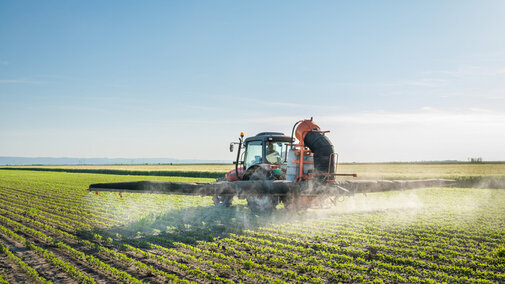What’s in a Name
One tool that can be used to great effect when controlling weedy plants is an herbicide application. To get good control, we must be sure we have the right product to address the weed we want to manage. Proper weed identification is critical for this first step, but herbicide trade names don’t help make this pairing any easier.
For example, let’s look at a popular pasture herbicide — Grazon P+D. Grazon P+D is a picloram and 2,4-D mixture with a wide spectrum of broadleaf control in pasture settings that was especially liked for its action against leafy spurge. Currently discontinued by the original manufacturer, there are other picloram/2,4-D generics that producers can find and use. Don’t worry — if you still have some Grazon P+D on hand, you can use that up, too.
Now this is where things get a bit confusing. About the time Grazon P+D was phasing out, another herbicide hit the market — Grazon Next HL. This Corteva product, despite a similar name, is a Milestone/2,4-D mix that doesn’t control leafy spurge. It does, however, have great action against many other broadleaf weeds found in range and pasture.
We need to be careful and not confuse Grazon Next with another Corteva product: Graslan L. Graslan is a Tordon/2,4-D mix which again has a wide spectrum of control against broadleaves in range and pasture and does have action on leafy spurge.
Herbicides are diverse and selecting the right one can be tricky. It’s easy to assume a similar name or manufacturer means similar control will occur, but this isn’t always the case. Read the product label — especially the active ingredients and controlled species portions — for a successful application.
Irrigating Alfalfa In-season
Although alfalfa is relatively drought-tolerant, irrigation makes it possible to produce higher yields. This perennial forage does not have specific critical growth stages when less sensitive to water stress. When moisture-stressed, the plant will slow or stop growing and go dormant. Then, when water becomes available, growth resumes.
Since alfalfa has a longer growing season, it uses more water annually compared to other crops. However, you can over-water alfalfa resulting in plant injury, disease and possibly weed invasion. Irrigation can be challenging due to multiple harvests preventing watering for about seven to 10 days per growth cycle and frequent heavy equipment traffic compacting soils. To reduce compaction, stop irrigating two to three days before cutting the alfalfa, and irrigate again when alfalfa regrowth begins. Heavy irrigation of alfalfa stubble may encourage weed growth.
Irrigation scheduling efficiency can be improved with using ET gages or soil moisture monitoring. Accurate weather forecasts can also allow growers to take full advantage of rainfall events and reduce irrigation applications.
As temperatures increase, daily water use is also increasing. Generally, the most yield impacting irrigation occurs just before the second cutting followed by the third and fourth growth periods typically requiring six to seven inches of irrigation. Peak water usage is about 1/3-inch per day in July and August. However, hot, windy and dry days can move the maximum water demand up to 1/2 inch per day.
Our UNL Water website provides more alfalfa irrigation details. NebGuide, G1778, “Irrigation Management and Crop Characteristics of Alfalfa” is a useful free resource.
Poison Hemlock and Livestock
Have you noticed tall weeds with umbrella-like white flowers in pastures, ditchbanks and along the roadsides? It may be poison hemlock and be careful, as it is poisonous to livestock and people.
Poison hemlock is on the list of top 10 poisonous plants here in Nebraska. This weed can be found throughout the state, especially in wet or moist soils along streams, roadsides and pastures. Hemlock has fern-like leaves with purple spots on the stems. Poison hemlock is a biennial broadleaf plant, meaning it will grow as a rosette its first year and produce a stalk with white flowers in its second year of growth. They have taken off growing around the state with the recent much needed rain.
So how can you manage this weed?
It’s critical that you avoid overgrazing pastures that contain hemlock. When adequate forage is available to graze, animals select healthy, palatable plants to eat and avoid the hemlock. But if grass gets short, even unpalatable poisonous plants might be eaten. This includes turning hungry animals out into fresh pastures containing hemlock — some hungry animals will eat the first green plant they come to, palatable or not.
Be sure plenty of water, salt and mineral are always available, as animals deprived of water or mineral may eat abnormally, increasing the risk of consuming some hemlock. Consuming just five pounds of foliage can be potentially lethal for cows, while just two pounds can be deadly for horses.
Fortunately, hemlock usually is not palatable to most livestock. Animals won’t eat much of it unless it is the only green plant around or if the plant has been altered in some way. Do not — and I repeat, do not — try to control hemlock during the grazing season by mowing or spraying with 2,4-D + Dicamba. This alters the plant and can actually increase its palatability, making it more likely animals will eat enough of it to cause poisoning. Instead, control poison hemlock in the early spring or fall when animals are not in the pasture or fence off large patches from livestock if control is necessary.

